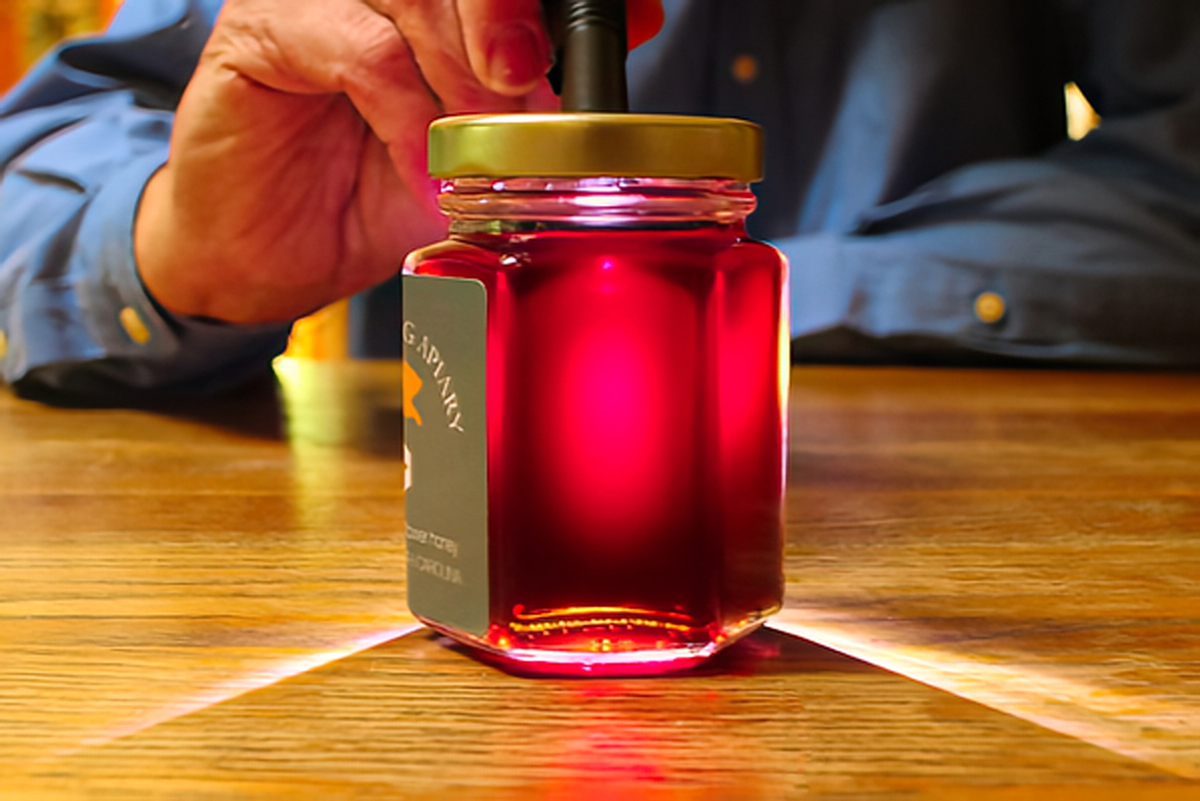In the world of natural wonders, few things capture the imagination quite like purple honey. With its striking color and mysterious origins, purple honey has intrigued both honey enthusiasts and casual consumers alike. This article delves into the fascinating aspects of purple honey, exploring what makes it unique, how it is produced, and why it has become such a coveted delicacy.
What Is Purple Honey?
Purple honey is a rare and captivating type of honey that stands out due to its unusual hue. Unlike the typical golden or amber tones of conventional honey, purple hone’y boasts a vibrant purple color that can range from light lavender to deep violet. This distinctive coloration sets it apart and raises questions about its origin and composition.
The Origin of Purple Honey
Purple hone’y is primarily found in hives located near the North Carolina coastal plain. Beekeepers in this region have reported the phenomenon for decades, and it continues to be a subject of curiosity and study. The unique environmental factors of this area, including specific flora and soil conditions, are believed to contribute to the production of purple honey.
The Taste of Purple Honey
Beyond its eye-catching appearance, purple honey is also renowned for its distinct flavor. It offers a sweet taste with floral and fruity undertones, making it a delightful addition to a variety of culinary applications. Some describe its flavor as more complex and robust compared to traditional honey, adding to its appeal among connoisseurs.
How Is Purple Honey Produced?
The Role of Honey Bees
Honey bees play a crucial role in the production of purple honey. These industrious insects collect nectar from flowers, which they then transform into honey through a process of regurgitation and evaporation. The specific flowers visited by the bees significantly influence the color and flavor of the honey they produce.
Potential Sources of Purple Pigmentation
The exact cause of the purple coloration in honey remains a topic of debate and research. Several theories have been proposed, including:
- Plant Sources: Some scientists suggest that certain plant species with purple or blue flowers might contribute to the coloration. Plants such as blueberries, elderberries, and certain varieties of clover are considered potential sources.
- Soil and Mineral Content: The unique soil composition in the North Carolina coastal plain, rich in certain minerals, could influence the nectar collected by bees, leading to the purple hue.
- Anthocyanins: These are naturally occurring pigments found in various plants that can produce red, purple, or blue colors. It is possible that anthocyanins from specific plants are responsible for the purple color in the honey.
The Environmental Impact of Honey Bees
Pollination and Biodiversity
Honey bees are essential pollinators, playing a critical role in the reproduction of many flowering plants. Their activity supports biodiversity and the health of ecosystems. By facilitating the growth of plants, honey bees contribute to the food supply for various animals and humans alike.
Challenges Facing Honey Bees
Despite their importance, honey bees face numerous challenges, including habitat loss, pesticide exposure, and diseases. Efforts to protect and support bee populations are vital to ensuring the continued availability of not only purple hone’y but also a wide range of agricultural products.
The Mystique of Purple Honey
Historical and Cultural Significance
Purple hone’y has captured the imagination of people for generations. In some cultures, it is considered a symbol of rarity and luxury. Historical references to colored honey can be found in various texts, suggesting that the phenomenon has been observed and valued for centuries.
Modern-Day Popularity
In today’s market, purple hone’y is highly sought after by gourmets and natural product enthusiasts. Its rarity and unique attributes make it a premium product, often commanding higher prices than regular honey. Farmers’ markets, specialty food stores, and online platforms are common places where purple hone’y can be found.
Culinary Uses of Purple Honey
Gourmet Applications
Purple honey’s unique flavor and color make it a versatile ingredient in gourmet cuisine. Chefs and home cooks alike enjoy using it to enhance dishes and create visually stunning presentations. Some popular uses include:
- Cheese Pairings: Drizzling purple hone’y over cheese platters adds a sweet contrast and a pop of color.
- Desserts: Purple hone’y can be used in baking or as a topping for desserts like ice cream, yogurt, and pancakes.
- Marinades and Glazes: Its complex flavor makes it an excellent addition to marinades and glazes for meats and vegetables.
Health Benefits
Like other types of honey, purple hone’y is rich in antioxidants and has natural antibacterial properties. It is also believed to have anti-inflammatory benefits and can be used as a natural remedy for sore throats and coughs.
The Future of Purple Honey
Research and Development
Ongoing research aims to better understand the factors that contribute to the production of purple honey. Scientists and beekeepers are working together to uncover the precise mechanisms behind its unique color and flavor. This research could lead to more consistent production methods and potentially expand the availability of purple honey.
Sustainable Beekeeping Practices
Promoting sustainable beekeeping practices is essential for the continued production of purple hone’y. By protecting bee habitats, reducing pesticide use, and supporting local beekeepers, we can ensure that this natural wonder remains available for future generations to enjoy.
Conclusion
Purple hone’y is a fascinating and rare product that continues to captivate those who encounter it. Its unique color, distinct flavor, and mysterious origins make it a standout in the world of honey. As we learn more about the environmental factors and bee behaviors that produce purple hone’y we can appreciate the intricate relationships within our ecosystems and the importance of supporting honey bee populations.
Whether enjoyed as a gourmet delicacy or valued for its potential health benefits, purple hone’y remains a symbol of nature’s ability to surprise and delight us. By embracing sustainable practices and fostering curiosity, we can continue to uncover the many wonders of the natural world, with purple hone’y serving as a shining example.







